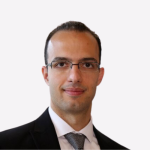The Official Detailed Program: Seno-Therapeutics Summit 2023
A Welcome Note
Welcome to the heart of the Seno-Therapeutics Summit 2023 – our official detailed program. We encourage you to explore the carefully curated schedule of sessions, speakers and discussions that will define the essence of this year’s summit.
Discover the Frontier of Seno-Therapeutics
The Seno-Therapeutics Summit 2023 strives to lead the way in addressing crucial challenges in cellular senescence and therapeutics. Our program highlights the dedication of top experts, researchers, and visionaries from diverse domains collaborating to pioneer solutions and shape the future of seno-therapeutics.
For the latest updates on all summit-related information and guidelines, we invite you to regularly visit our website and stay tuned to our official communications. Your active engagement is crucial, and we are thrilled to have you as part of our community!

Senescent cells contribute to age-associated disease through their pro-inflammatory senescence-associated secretory phenotype (SASP). We have previously shown that the SASP is dependent on a mitochondria-nucleus retrograde signaling pathway that triggers nuclear expulsion of damaged DNA as cytoplasmic chromatin fragments (CCF) through a process regulated by p53 binding protein, 53BP1. The SASP is also dampened by the tumor suppressor p53 through an unknown mechanism. We have shown that a mitochondria-p53 network controls CCF formation and the SASP. Pharmacological inhibition of MDM2 in old mice decreased markers of senescence in liver, suggesting a potential senomorphic role in vivo. These data provide evidence for a mitochondria-p53 signaling pathway in senescent cells as a potential target for senomorphic healthy aging interventions.

Aging is characterized by chronic, low-grade, systemic inflammation (inflammaging), a significant risk factor for morbidity and mortality in older individuals. A significant contributor to inflammaging is the accumulation of senescent cells and their senescence-associated secretory phenotype (SASP), which is enriched in pro-inflammatory mediators1. Here, we demonstrate that senescent cells release significant amounts of ATP through connexin43 channels. Increased ATP enhances purinergic signalling in senescent cells, exacerbating the production and secretion of pro-inflammatory molecules in a calcium- and NF-kB-dependent mechanism. Strikingly, pharmacological inhibition of the purinergic receptor P2X1 reduces NF-kB activation and expression of pro-inflammatory factors in mouse models of chemotoxicity and osteoarthritis, eventually leading to improved physical performance and reduced inflammation. Taken together, we uncover a new mechanism regulating the inflammatory phenotype of senescent cells, and a potential new therapeutic target against inflammaging and age-related diseases (ARD).


Cells responding to damage implement complex adaptive programs that often culminate in one of two distinct outcomes: apoptosis or senescence. We have systematically investigated factors that promote senescent cell survival. In one study [1], a drug library screen revealed that TrkB inhibitors were capable of selectively triggering apoptosis of senescent human cells. Senescent cells expressed high levels of TrkB, which supported senescent cell viability, and secreted the TrkB ligand BDNF [a member of the SASP (senescence-associated secretory phenotype)]. The reduced viability of senescent cells after ablating BDNF signaling suggested an autocrine function for TrkB and BDNF, which activated ERK5 and elevated BCL2L2 levels, favoring senescent cell survival. Treatment with TrkB inhibitors reduced senescent cells in aged mouse organs. These data led us to posit that activating TrkB by the SASP factor BDNF promotes cell survival and could be targeted therapeutically to reduce the senescent-cell burden.
In a second study [2], we identified SRC as a major kinase contributing to the apoptosis-vs-senescence decision in fibroblasts responding to etoposide. SRC was activated by low but not high levels of etoposide. With low DNA damage, SRC-mediated activation of p38 critically promoted expression of cell survival and senescence proteins, while SRC-mediated repression of p53 prevented a rise in proapoptotic proteins. With high DNA damage, failure to activate SRC led to elevation of p53, inhibition of p38, and apoptosis. In mice exposed to DNA damage, pharmacologic inhibition of SRC prevented the accumulation of senescent cells in organs, suggesting that SRC inhibition could also be exploited to favor apoptosis over senescence in tissues.
More recently [3], a whole-genome CRISPR knockout screen revealed that proteins in the YAP-TEAD pathway promoted senescent cell viability. Accordingly, treating senescent cells with an inhibitor of this pathway, Verteporfin (VPF), selectively triggered apoptotic cell death with DDIT4 derepression, in turn inhibiting mTOR. Reducing mTOR function in senescent cells diminished endoplasmic reticulum (ER) biogenesis, triggering ER stress and apoptosis due to high demands on ER function by the SASP. Importantly, VPF treatment decreased senescent cell numbers in the organs of old mice and mice exhibiting doxorubicin-induced senescence. Furthermore, VPF treatment reduced immune cell infiltration and pro-fibrotic TGFβ signaling in aging mouse lungs, improving tissue homeostasis. This senolytic strategy eliminates senescent cells by hindering ER activity required for SASP production.
In sum, we have found that senescent cell survival is promoted at different levels: by autocrine induction of TrkB activity by the SASP factor BDNF, by activation of SRC, and by maintenance of robust ER activity through the YAP-TEAD pathway.
[1] Anerillas et al., Nature Communications 2022
[2] Anerillas et al., Science Advances 2022
[3] Anerillas et al., BioRxiv https://biorxiv.org/cgi/content/short/2022.12.18.520921v1


Gliomas are the most common and aggressive adult brain tumors. No new medication has improved survival since 2005. Standard therapies with chemoradiation is known to induce a transient senescent-like state prior to inevitable recurrence. To date, little is known about the biology of the latent human disease. However, preclinical data suggests that the radiated brain microenvironment can exacerbate glioma aggressiveness, which could be attenuated by removal of senescent cells. Our team is leveraging a range of neurosurgical strategies to improve mechanistic understanding of human glioma longitudinally throughout the disease course. These include intra-operative microdialysis; an ongoing prospective trial for resection of pre-recurrent brain tumors to provide access to treated tissue for cryopreservation and functional studies; Ommaya reservoir placement for longitudinal CSF biomarker monitoring, and early phase clinical trials of candidate therapies to evaluate pharmacodynamic impacts. We aim for these complementary approaches to empower mechanistic studies within the human brain. If successful, ablation of senescent cells from the latent glioma microenvironment could forestall time to otherwise inevitable recurrence, mitigate the aggressiveness of recurrent disease, and improve cognitive outcomes in long-term survivors.













Cellular senescence is an irreversible state of cell-cycle arrest and serves as an important tumor suppression mechanism that prevents abnormal cell growth and transformation into cancer cells. However, senescent cells do not immediately die, but rather express various secreted proteins such as inflammatory cytokines, chemokines, and growth factors, a phenomenon known as SASP. Therefore, it has been pointed out that the accumulation of senescent cells in the body with aging causes chronic inflammation, which may be one of the causes of increased incidence of various age-related diseases, including cancer. Thus, the development of methods to remove senescent cells accumulated in the body (senolysis) as a means of cancer prevention and anti-aging is actively pursued worldwide. Through unbiased high-throughput screening, we have recently discovered that inhibitors of BRD4, a transcription factor, selectively kill senescent cells, and we are now conducting research to elucidate the mechanism of action and further improve efficiency. On the other hand, it has been reported that SASP also plays important roles in maintaining the homeostasis of living organisms, such as wound healing. Therefore, it is necessary to carefully consider whether blindly removing senescent cells from the body is really beneficial. We have been attempting to determine the causes of cellular senescence, believing that it is safer and more effective to identify and prevent the causes of cellular senescence induced in the body, rather than to blindly remove senescent cells accumulated in the body. Here I report our recent discovery of one such causes that induces cellular senescence in aging mice.



Cellular senescence is caused by the accumulation of DNA damage and/or other cellular stressors that drive proliferating or terminally differentiated non-dividing cells to a state characterized by replicative arrest, profound chromatin changes, increased expression of the cell cycle inhibitors p16Ink4a and/or p21CIP1 as well as resistance to apoptosis. Some senescent cells can develop a senescence-associated secretory phenotype (SASP), consisting of pro-inflammatory cytokines, chemokines, and extracellular matrix-degrading proteins, which have deleterious paracrine and systemic effects that drive aging and age-related diseases. Reduction in the senescent cell burden, either genetically or pharmacologically, is able to extend healthspan. To identify and optimize senotherapeutics, we developed and utilized senescent cell phenotypic-based assays as well as bioinformatic approaches. Using these assays, we initially identified a number of senotherapeutics including HSP90 inhibitors, Bcl-2 family inhibitors, fisetin, and the combination of dasatinib/quercetin as senolytics and IKK/NF-κB inhibitors, mitochondrial targeted free radical scavengers and young stem cell-derived extracellular vesicles as senomorphics. More recently, we identified a natural lipid as a potent senolytic, able to induce ferroptosis of senescent cells, as well as demonstrated that the bisphosphonate zoledronic acid used for treatment of osteoporosis has senolytic activity. Also, to improve the activity of the identified senolytics, we also have used medicinal chemistry to generate more effective and safer senolytic analogs. In addition, we have identified a miRNA cocktail from stem cell derived extracellular vesicles that has senomorphic activity in cell culture and in vivo. Finally, we identified a miRNA capable of functioning as a senolytic in vivo. An update regarding these novel senotherapeutic small molecules and miRNAs will be presented.


Cellular senescence is associated with morphological changes at the subcellular, cellular, tissue, and organ levels. Traditional methods to assess these changes rely on manual measurements or simplistic image processing tools, which can be time-consuming, subjective, and limited in their ability to capture the nuances of aging morphology. To overcome this, we employ machine learning to analyze nuclear morphology changes across tissues and species allowing us to investigate health effects of senescence. Deep learning provides a promising tool for objective and detailed morphological assessment in senescence studies. Its ability to efficiently process vast amounts of imaging data and detect nuanced changes may offer a significant advantage over traditional methods. As aging research continues to grow, deep learning-based approaches can be instrumental in advancing our understanding of senescence and facilitating potential therapeutic interventions.


Recent evidence demonstrates that senescence can act as a tumor-suppressive or tumor-promoting mechanism in cancer. Here, I will discuss recent findings showing that cellular senescence can promote metastases formation in prostate cancer and that therapies that eliminate senescent tumor cells (senolytics) or reprogram the SASP (senostatics) can efficiently prevent metastases in different mouse models. Moreover, I will present recent data demonstrating that senescence can occur in tumor-infiltrating myeloid cells (PMN-MDSCs). As previously reported, this population of immune cells can support prostate tumor proliferation through different mechanisms. Senescent-like myeloid cells express TREM2, are more immunosuppressive and tumor-promoting, and have an increased lifespan than canonical PMN-MDSCs. Genetic and pharmacological elimination of senescent-like myeloid cells decreases tumor progression in different mouse models of prostate cancer. These results support the development of senolytics targeting cancer and senescent-like myeloid cells for cancer therapy.


Cellular senescence is a stress-response mechanism implicated in various physiological processes, diseases and aging. Despite current senescence detection approaches, exploiting upregulation of cyclin-dependent kinases p16INK4A and p21WAF1/Cip1 or lipofuscin accumulation, effective methodologies that enable precise isolation or live tracking of senescent cell populations in non-transgenic organisms are still lacking. Consequently, an in-depth analysis of truly senescent cells is a very challenging task. To address this issue: i) we synthesized and validated a novel fluorophore-conjugated, Sudan Black-B analog (GLF16), suitable for in vivo and in vitro analysis of senescence by fluorescence microscopy and flow cytometry; andii) developed and applied a GLF16-carrying micelle vector that facilitates GLF16 uptake by living cells in vivo and in vitro. This new compound and its associated methodology render, for the first time, isolation of senescent cell populations at the single-cell level an easy, rapid, and precise process, in various biological materials. Moreover, the nanocarrier-mediated delivery of GLF16 in live senescent cells comprises a unique tool for senescence characterization at an unprecedented depth.


While establishing a barrier to tumor development and serving as an anti-tumor effector mechanism in the first place, lastingly persistent senescent cancer cells may cell-autonomously and non-cell-autonomously promote tumor progression. Accordingly, not only the senescence-associated pro-inflammatory, matrix-digestive and immune-suppressive secretory impact on the environment, but reprogramming into stemness and occasional cell-cycle re-entry of senescent cancer cells argue for senolytic rather than senomorphic strategies. We were the first to demonstrate in a preclinical lymphoma model that chemo-consolidating senolytic targeting prolonged mouse survival in a senescence-dependent fashion. We further showed senescence restoration of post-senescent melanoma cells as a basis for senolytic intervention, and presented immune checkpoint blockers as senolytic immune therapeutics that de-repress PD-L1/2:PD1-blunted adaptive T-cell recognition of senescent lymphoma cells in vitro and in vivo. An update of our preclinical work on senolytics will be presented at the meeting. Moreover, in addition to our preclinical and clinical experience with senolytics to target virus-induced senescence as driver of severe COVID-19, the clinical perspective and respective windows-of-opportunity to tackle minimal residual senescence in lymphoma patients will be discussed.


Cellular senescence is a heterogeneous cell state canonically described as a state of irreversible growth arrest, increased apoptosis resistance, and adoption of a senescence-associated secretory phenotype (SASP). However, none of these markers are universal and while senescent cells are often thought of as detrimental as they accumulate with age, senescent cells also play many beneficial roles in wound healing and embryogenesis. Better characterizing this heterogeneity is crucial to developing more efficacious senolytics. Senescent cell heterogeneity is often described when comparing senescent phenotypes with different cells or senescence inducers. Here we introduce senescent cell heterogeneity with the same cell type and senescence inducer but dependent on the disease state. Through RNA sequencing (RNA-seq) and senolytic screens in lung fibroblasts from patients with and without idiopathic pulmonary fibrosis (IPF), we show that non-IPF and IPF lung fibroblasts induced to senesce exhibit notable transcriptomic differences and differential susceptibility to first generation senolytics, such as ABT263. We also observe that prior to senescence induction, IPF lung fibroblasts are already in a “senescent-like” state while still dividing and displaying low senescence-associated beta-galactosidase activity. Once these IPF lung fibroblasts are induced to senesce, many “canonical” nodes of senescence are not further activated, such as MMPs, CXCLs, and CCLs. These differences offer routes to developing specific and safe senolytics for the treatment of IPF. Our data also highlights how the initial cell state, i.e. diseased or not diseased, seems to influence the downstream senescent state. IPF is a progressive, highly inflammatory age-related disease of the lung where the positive feedback loop of progressively inflamed cells in the lung niche may change how cells proceed into senescence with time. Future directions aim at uncovering nodes driving senescent cell heterogeneity through transcriptomic time course analyses and paired ATAC-seq and RNA-seq. Ultimately, we’ve shown that cellular senescence is more heterogeneous than previously described with our data highlighting transcriptomic differences in senescent cell states with the same cell type and senescence inducer as well as the drawbacks of first generation senolytics. This sets the foundation to better define senescent cell heterogeneity with a focus on nodes driving detrimental cell states.



Cellular senescence has emerged as an important process in human health and disease. The senescence program involves coordination between a stable cell cycle arrest and the secretion of factors known as the senescence-associated secretory phenotype (SASP). SASP factors modulate the tissue environment, including stimulating immune cell recognition and clearance in some settings and tissue dysfunction in others. In cancer, senescence provides a barrier to oncogene-initiated tumorigenesis and, indeed, tumor suppressor genes that promote senescence are frequently inactivated in malignant tumors. Conversely, the aberrant accumulation of senescent cells and a pro-inflammatory SASP can promote tissue decline and contribute to age-related pathologies. It has been suggested that one factor that dictates whether senescence prevents or promotes pathology is the propensity of senescent cells to become targeted by the immune system. Work from our laboratory and others suggests whether and how senescent cells are surveilled by the immune system is highly context dependent and can be modulated therapeutically. In this presentation, I will discuss how some cancer therapies can stimulate immune surveillance to enhance tumor responses as well as unconventional strategies to eliminate senescent cells from aged and damaged tissues.



Senescence is a cell fate elicited via signaling events in response to a variety of stress stimuli. The purpose of the senescent phenotype is to stably arrest the cell cycle to prevent oncogenic events and cancer development. The consequence is a time-dependent increase in senescent cell abundance, which promotes chronic sterile inflammation via the senescent cell secretome. Senescent cells unequivocally play a causal role in aging biology and thereby age-related diseases. As such, senescent cells are a good pharmacologic target for geroscience approaches to treat age-related diseases. Hence, the emergence of senotherapeutics: drugs that selectively kill senescent cells (senolytics) or that attenuate their pro-inflammatory phenotype (senomorphics). A barrier to the development of highly specific and efficacious senotherapeutics is that, at least in vitro, senescent cell phenotypes differ depending on the cell lineage and inducer of senescence. In vivo, we do not know which cells senescence, which senescent cells are most deleterious, and what drives senescence. To address these gaps in knowledge, we delete a critical DNA repair gene, Ercc1, in individual cell types of mice using various Cre promoters to increase the level of genotoxic stress and thereby drive cellular senescence. In the majority of cases, this leads to premature senescence and development of an age-related disease associated with the targeted cell type. We believe this approach will yield physiologically relevant pre-clinical models for testing senotherapeutics.



Skeletal muscle has a remarkable capacity to regenerate, restore function and heal
after damage. This capacity dramatically decreases with aging, leading to a substantial
decline in muscle strength and mass, which has been closely tied to increased mortality.
A growing body of evidence implicates an accumulation of senescent cells in muscle as
a trigger and driver of the muscle aging phenotype. p53 plays an integral role in all
these processes; upregulation of p53 causes apoptosis in senescent cells and prevents
mitotic catastrophe in muscle cells from old mice. Efforts to find drugs that improve
muscle regeneration by targeting senescent cells have now become a hot topic in this
field.
Here, I will discuss recent findings showing that a novel pharmaceutical agent
(BI01), which functions by upregulating p53 through inhibition of binding to MDM2, the
primary p53 regulatory protein, improves muscle regeneration and hypertrophy in old
mice. Finally, I highlight the scientific and translational challenges regarding
senotherapeutics and aging.












Diabetic kidney disease is the most common cause of kidney disease worldwide. Cellular senescence contributed to disease pathogenesis. Successful targeting of senescence-induced injury may reduce injury and delay diabetic kidney disease progression.



Cellular senescence is a cell fate induced by damage signals, including repeated replication, mutations, misfolded/aggregated proteins, inflammation, toxic metabolites, pathogens, mechanical/shear stress. Senescent cells (SCs) are replicatively arrested, resistant to cell death, metabolically active, and release senescence-associated secretory phenotype (SASP) factors that are variable and can include inflammatory factors, cytokines, growth factors, bioactive lipids, and non-coding nucleotides, among others. 30-70% of SCs are pro-apoptotic, pro-inflammatory, and tissue-damaging. Senolytics selectively eliminate those SCs that are pro-apoptotic by transiently disabling defenses against their own SASP. Different senolytics target different subsets of SCs. Senolytics can be administered in a hit-and-run fashion, since they initiate irreversible SC apoptosis within hours and SASP-releasing SCs take weeks to reaccumulate. In preclinical models, senolytics can delay, prevent, alleviate, or treat >70 acute and chronic disorders across the lifespan and age-related phenotypes, including geriatric syndromes and decreased physical resilience.
The Hypothesis of the NIH Translational Geroscience Network (TGN) is that interventions targeting fundamental mechanisms of aging can delay, prevent, or treat age- related diseases and disabilities as a group, instead of one at a time. The TGN is developing human Gerodiagnostics (composites/signatures of “biomarkers” of fundamental aging processes for predicting or diagnosing conditions contributed to by these processes that can predict which intervention or combinations of interventions to use and when, monitor responses to these interventions, act as surrogate endpoints for clinical studies, and eventually be translatable to clinical practice), discover further mechanisms that can be targeted to prevent or treat multiple disorders and diseases, and speed translation of interventions from bench to bedside. The TGN provides advice/ support for >80 clinical studies of agents (senolytics, metformin, rapamycin, NAD precursors, anti-inflammatories, lifestyle interventions, and others) and lifestyle interventions targeting fundamental aging processes across the lifespan. >30 clinical studies related to the TGN are of senolytics for conditions including frailty, dementia, diabetes/obesity, chronic HIV, coronavirus, pulmonary fibrosis, osteoporosis, osteoarthritis, cancers, long-term complications of cancer treatments, macular degeneration, and others. Early results suggest senolytics decrease SC abundance and might be effective in humans, but much further study is needed before clinical use is considered.



The increasing pre-clinical validation of drugs targeting senescent cells (“senolytics”) is now opening up new opportunities as well as challenges for clinical trials evaluating the efficacy and safety of these drugs in humans. These include the (1) appropriate selection of participants for a given study; (2) assessing biomarkers of senolytic efficacy in humans prior to the large investments needed for functional efficacy endpoints; (3) whether trials should target a single condition associated with aging or multiple disease endpoints, as is being attempted by the TAME trial of metformin; (4) the types of efficacy endpoints chosen (i.e., surrogate endpoints such as bone mineral density vs. clinical endpoints such as fracture); and (5) appropriate assessment of safety endpoints, specifically potential impairments in the response to injury or long term risks of cancer. As such, while senolytics hold great promise, lack of a cohesive approach systematically addressing these questions may pose challenges to their appropriate translation into humans.


Diseases of blood vessels of the retina such as diabetic retinopathy and age-related macular degeneration are prominent causes of vision loss worldwide. Anti-VEGF therapies have revolutionized treatment however they require frequent injections and are inefficient in a large subset of patients. While often associated with natural aging, mounting data suggests a central role for cellular senescence across various sight-threatening diseases of the retina. During cellular senescence, cells remain viable and metabolically active, yet are unable to communicate with neighboring cells and trigger profound changes in gene expression. I will discuss how therapeutic elimination of senescent cells from diseased retinas can lead to long lasting benefits in patients and present clinical and fundamental data to support these findings.














Epigenetic changes are key during tissue aging, and targeting chromatin modifiers is a novel strategy to address and treat age-related diseases. Interestingly, we found that Down Syndrome tissues, that are characterized by an accelerated aging phenotype, show a dysregulated ubiquitination of histone H2A (H2AK119), an important epigenetic mark known to be regulated by the Polycomb complex PRC1 and by USP16. Trisomy of USP16 in Down Syndrome is responsible for the increased removal of single ubiquitin moieties from H2AK119, and therefore for regulating the chromatin accessibility to specific chromatin loci (i.g. CDKN2a). High levels of USP16 in DS result in somatic stem cell defects and increased senescence and aging in different tissues.
We investigated the role of USP16 in the context of several age-related diseases, including osteoarthritis and autoimmune diseases. Across different in vivo models, inhibition of USP16 with small molecules resulted in epigenetic remodeling of the H2AK119 locus, and in a profound regeneration of multiple affected tissues. These changes in tissue function are associated with a strong disease-modifying effect, supporting the role of USP16 as a key target for the treatment and management of age-associated diseases.


Rejuveron Senescence Therapeutics (RST) is a biotech company with a lead program in oncology and discovery programs focused on age-related disorders. The lead program is based on founder Manuel Serrano´s discovery that the immune checkpoint inhibitor PD-L2 is induced in the context of therapy-induced senescence, which subsequently contributes to senescent cell evasion from the immune system, and an incomplete response of tumors to chemotherapy. Based on this, RST has developed a therapeutic humanized monoclonal antibody against PD-L2 called RST-001, which has mechanisms of action distinct from anti-PD-1/PD-L1 therapies including but not limited to senescent cell clearance, and which is currently at the advanced stage of chemistry, manufacturing and control and preclinical studies in cynomolgus monkey. RST-001 has potent anti-tumor activity in combination with chemotherapy in a mouse model of breast cancer and is upregulated post-therapy in primary human breast cancer, including the triple negative subtype. RST´s discovery platform develops and validates cellular senescence models that closely mimic senescence which occurs in specific diseases, to identify novel senolytic targets. RST has already developed and screened and identified new targets an in vitro model of senescence in chronic kidney disease which are being triaged to be taken through target validation, drug discovery, hit-to-lead and IND-enabling packages for prioritized assets. RST is currently modeling other age-related disorders such as chronic pulmonary obstructive disease within the platform for identification of additional novel senolytic targets.


Senescent cells are associated with chronic diseases and cancer metastases in humans and were shown to be drivers thereof. We previously identified that interference with FOXO4-p53 through cell penetrating peptides could selectively eliminate senescent cells in mouse models where senescence is enhanced through defective DNA-damage repair (Baar .. de Keizer, Cell, 2017). Doing so could restore some signs of homeostasis. There have been many attempts towards development of compounds to eliminate senescent cells, but with varying success. At least in part, this is because of a lack of understanding of the different aspects of senescence.
Today, I will discuss how we identified that what we call senescence, is in fact a range of phenotypes. I will provide examples and zoom a damaged type of senescence, which we now call “scarred” senescence. I will show that at least for this type of senescence, we have been able to apply new structural and biomolecular insights to progressively develop potent therapeutics, i.e. CL04183. CL04183 potently counters scarred cancer metastases in vivo at dosing scheme and frequency that are well below the Maximally Tolerated Dose and applicable for preclinical translation. Together, we argue for a focus on individual subtypes of senescence and development of specific therapeutics. Scarred senescence and cancer can especially be targeted by FOXO4-based peptides, with a translational potential to the clinic.


Ponce De Leon Health (PDLH) is the world’s leading longevity company. It is the only company with evidence of both safety and efficacy in three different models, c. elegans, mice and now in humans. Rejuvant, a commercially available, sex specific, all natural combination product (patents pending), was shown in the scientific journal Aging, to reverse biologic age in humans by an average of 8 years, when subjects took a DNA methylation test first to determine their biologic age at baseline, then re-took the test 7 months later.
The original mouse studies were done at the Buck by Drs. Kennedy and Lithgow, and demonstrated an increase in life span of 12%, an increase in healthspan of 41%, and a compression of morbidity of 46%. There was also a large reduction in inflammation between test and control, especially in GM-CSF, IL-2, IL-6, IL-12, MIP-Iα, MIP-1β, RANTES and TNF. This work was done in Dr. Campisi’s Lab and showed that CaAKG blocks cytokine signaling from senescent cells, thus reducing chronic inflammation.



Genetic medicine has emerged as an innovative class of therapeutics, allowing the development of new and powerful approaches to address a myriad of diseases that were previously untreatable. As individuals age, the onset of a multitude of age-related diseases can significantly impact lifespan. I will discuss a number of promising genetic medicine approaches based on the Fusogenix proteolipid vehicle (PLV) platform to target both general and specific mechanisms of age-related disease to make a positive impact on healthspan extension.


As we age, the immune system fails to effectively remove senescent cells resulting in the accumulation of pathogenic senescent cells. This accumulation of senescent cells drives chronic inflammation, fibrosis, and stem cell exhaustion. Unfortunately, identification of a targetable immune mechanism to selectively clear senescent cells was previously undiscovered.
In response, Deciduous Therapeutics was formed to elucidate the endogenous immune mechanism underlying senolysis. Using single cell RNA sequencing, we analyzed senescent cell populations to uncover that Natural Killer T-cells or “NKT’s” were responsible for clearing senescent cells in vivo.
Further, we show that while NKT function declines with age and in the presence of disease, they can be restimulated with novel immunotherapies. Subsequently, our in vivo data shows that a single dose of the NKT agonist can stimulate NKT cells, leading to a significant ablation of senescent cells, ultimately culminating in disease resolution in both metabolic and fibrotic disease classes.


The reversible formation of membraneless organelles, called condensates, is important to healthy cellular physiology and occurs through a process called phase separation. The perturbation of phase separation has been implicated in all hallmarks of aging, especially as it relates to stress granule formation in cellular senescence. As a distinct biophysical process compared to traditional protein-protein interactions, phase separation should be considered when screening or developing senolytic or senomodulatory therapeutics.


The innate immune system tightly regulates senescent cells to maintain homeostasis. However, with increasing age, there is an increase in senescence burden, associated with age-related decline in function leading to diseases. Our data indicates that a decline in immune surveillance mechanisms may primarily contribute to the age-related increase in senescence burden. We are developing potential therapeutic approaches to finding and eliminating senescent cells using the innate immune system and small molecules safer than current senolytic drugs. My talk will describe our recent progress in this endeavor.



Cellular senescence is a pleiotropic mechanism, functioning as a double edge sword in physiological and in pathological functions. The proper identification of pathological senescent or senescent-like cells is key to target therapeutic drivers of diseases. However, the canonical markers of cellular senescence result insufficient to properly identify key cell types in human disease tissue. Senescent cells are heterogeneous populations and represent a small fraction of the tissue. Nevertheless, they play an important role in driving a maladaptive response in the tissue microenvironment, establishing a crosstalk with immune cells resulting in an inflammatory chronic state that can degenerate in fibrosis, loss of regenerative functions and increased cancer malignancy. We applied single cell multi-omics and machine learning to identify and classify relevant aberrant cells with senescent properties characteristic of diseased tissues to inform drug discovery and development of next generation of selective senolytics specific for different tissue-related indications.

















